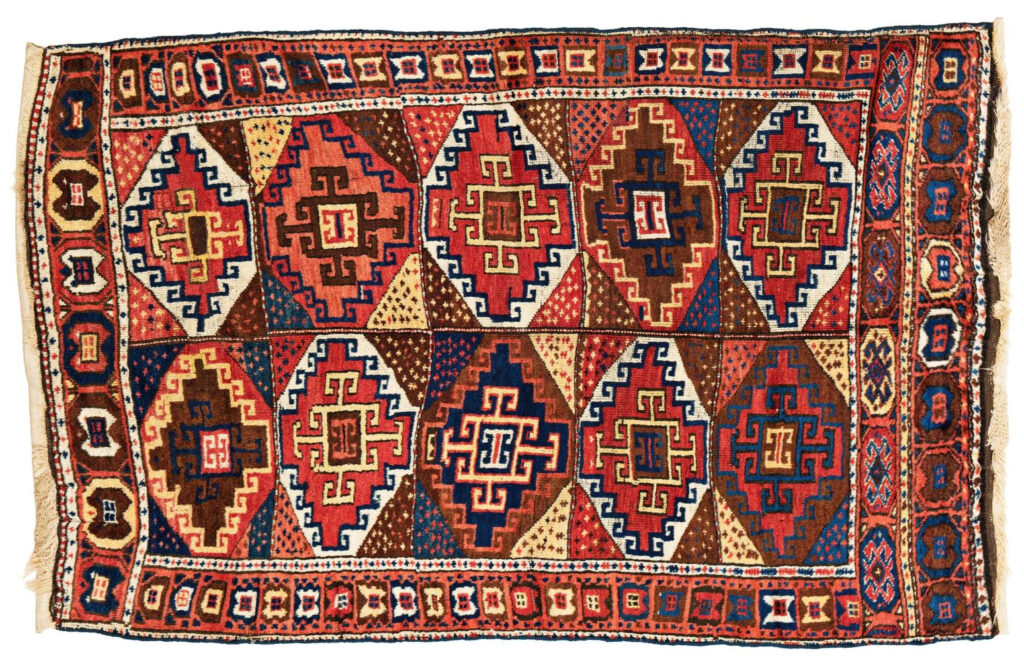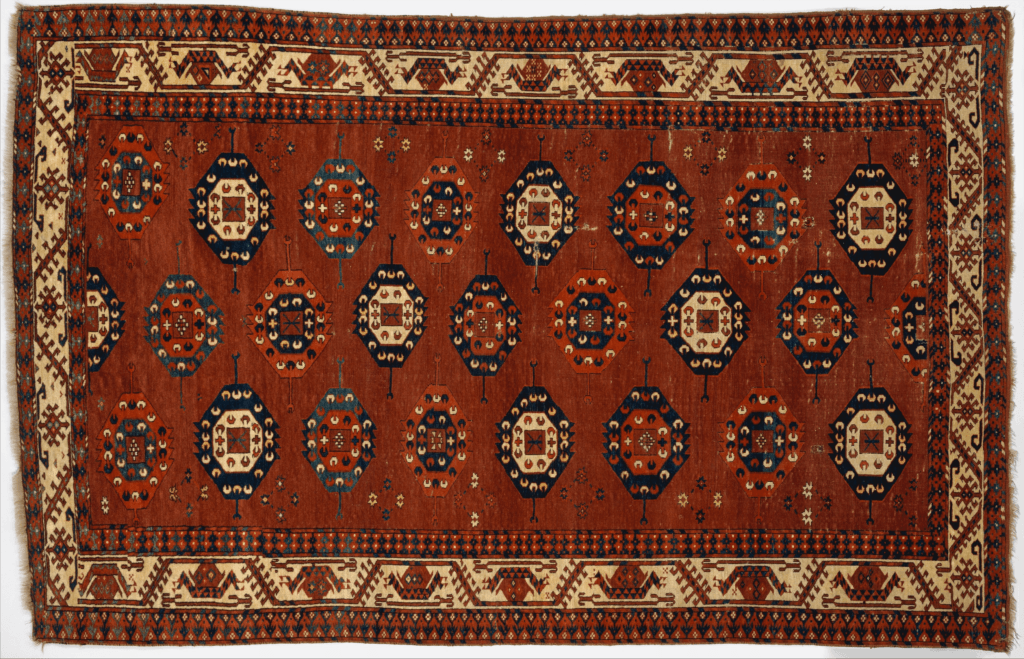How to find out the origin of an antique rug by its pattern
Did you know there’s a deep connection between the type of knot used in a rug and its design? The design will be more rectilinear or curvilinear, depending on the knot used. It’s generally possible to know where an antique rug was made and by whom, depending on the knot and design. This text will explain this relationship and what determines a rug’s design.
What forms the rug is the set of knots tied to its warp. There are several types of knots. The two main ones, most found in antique rugs, are the Turkish knot or Ghiordes knot and the Persian knot or Senneh knot. The Turkish knot, the two warp threads (vertical threads) are joined through the wool thread by which the knot is tied. In the case of the Persian knot, although the wool thread passes through the two warp threads, only one end of the thread is connected to the warp, and the other is loose.
Rugs made with the Turkish knot have straight lines in their design because the knot that closes the space between the warps makes it challenging to produce curved lines.



Until the mid-19th century, i.e., before European influence on oriental rugs, the areas that employed Turkish and Persian knots were more defined, mainly in regions where Turkish groups lived. All Anatolian or Turkish rugs, except those produced in Istanbul’s workshops or surroundings, had a strictly geometric design. In addition to them, many Caucasian groups explored the variations of geometric design with the highest perfection, as well as nomadic groups of Turkish origin living in southern and western Persia, such as the Afshar, Shiraz, Qashga’i, Luri, and Kurds.
During the 19th century, however, floral motifs became part of the geometric style, and thus, it’s possible to find some pieces from this era containing a mixture of both trends. Further east, the Turkmen groups inhabiting what is now known as Turkmenistan, Afghanistan, and Persia always maintained the rectilinear design. The Tekke, Saryk, Yomud, and Ersari groups learned how to produce works of art with a minimum use of colour but, at the same time, with magnificent subtlety of nuances, preserving their design.

However, the pinnacle of floral ornamentation and the supremacy of curved lines was achieved in Central Persia at the end of the 15th century and during the 16th century. Thanks to the Senneh knot, which allows the artist to make a delicately curvilinear design, the masterpieces of oriental weaving art emerged, enchanting textile art lovers since the earliest times. Talented artists adapted the illustrations of books and book covers (another form of Persian art) perfectly executed for rug design. They created the famous rugs that can be admired in museums worldwide today and, according to their design, were grouped as vase rugs, hunting rugs, and animal rugs.
Along with the creation of the Persian knot, the range of colours used increased, giving rise to the creation of works of art that, in their beauty and harmony of colours, are in no way inferior to plastic art. In Persia, straight and curved lines can be found side by side to this day, although a Persian rug, compared to a Caucasian, Turkish, and Turkmen rug, will always tend to present a curvilinear design.

Figalli Oriental Rugs
We do not sell rugs. We bring rare works of art to your home in the form of rugs.
Our services
You are Protected
Copyright © 2023 Figalli Oriental Rugs, All rights reserved. Desenvolvido por Agência DLB – Agência de Marketing Digital em Porto Alegre
